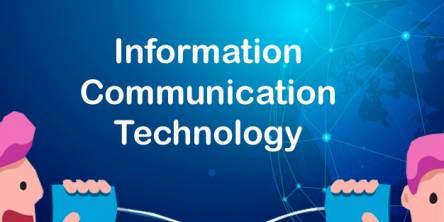Cloud Native Development: Key Benefits for Businesses

As cloud computing continues to become increasingly relevant in the current market, more and more companies are rushing to integrate this avant-garde technology in their operations. And it is not a one-time thing; i.e. experts believe this shift to cloud computing from on-premises systems will continue for the foreseeable future. Why? Plenty of reasons, such as the ability to modernize archaic systems. It also enables businesses to ensure continuity even in the face of disruptions, such as the one posed by the coronavirus pandemic.
Today cloud is helping organizations connect people, data, and processes in new ways that can help embrace the possibilities that are enabled by modern technologies. And, to succeed in a digital-first world, business leaders are putting together business and IT closer for optimizing processes to create new value for customers. Though, if the applications go to the cloud without the transformation of their architecture, it would result in organizations not being able to reap the full range of rewards. The cloud-native
architecture helps the enterprise make better use of cloud computing. It would help deliver increasingly agile, affordable, scalable & flexible services.
Suffice it to say that the recent years in the app development market have marked a crucial shift in preferences: towards cloud-native development. Now, let us take a closer look at some of the other business benefits of cloud-native app development to see why it remains such a highly sought-after technology.
1. Seamless management: One of the key benefits of cloud-native development is that it enables companies to streamline their operations via better capabilities, improved levels of mobility, access to top-notch analytics, etc.
2. Cost-efficiency: Cost is, of course, a significant point of concern for most organizations. Cloud-native app development successfully tends to this particular restraint in a variety of ways; for starters, it eliminates costs of fixed infrastructure and resources. Then, it also does away with the costs associated with the maintenance and upkeep of such infrastructure. Plus, all the competition in the cloud services market is anyway resulting in reduced prices.
3. Better customer experiences: Cloud-native development ensures companies can connect all their systems across the organization. Such seamless connectivity of company systems is vital for the delivery of high-quality customer service since it helps close any disconnect between back-end systems and processes. Long story short, cloud-native apps can provide quick response times as well, thus further improving the quality of users’ experiences.
4. Improved availability: Yet another compelling benefit of using a cloud-native architecture for app development is that the architecture enables high levels of availability for the primary/secondary and cluster modes as well as the cold backup. This involves a switchover of only some seconds and provision of services with an availability of more than 99.999 percent. The cloud-native architecture also includes throttling, degradation, and system protection to help safeguard the organization’s system as well as control resource usage.
5. Automation: With cloud-native apps, it is possible to empower them with a continually automated flow of features. What that means is developers can introduce new features continuously via an automated continuous integration and continuous deployment pipeline. Automation can also help alleviate some of the complexities associated with the given technology across the cloud-native setup.
Embracing the cloud, unlike what some people may be inclined to believe, is about much more than just apps and IT infrastructure. Integrating a cloud-native app development approach is an intricate process that necessitates the expertise of professionals well-versed with such a development tenet and has experience with enabling such a transition and successfully at that. So, if you too want to take full benefit of cloud-native app development, we recommend you start looking for a trusted vendor or service provider ASAP so you can achieve the benefits, such as the ones listed above, sooner.
Similar Articles
Among the many fields covered by the information and communication technologies industry (ICT) are health IT software transportation and logistics technologies GIS mapping and telecommunications technology digital content mobile infrastructure and transactions
IT managed support services have become quite popular among small-mid and large-sized businesses. The main reason for this is that they eliminate the stress of maintaining the IT systems for the enterprise and it can focus on its core business.
The modern era we live in has managed to make us revise many conventional contexts where it was formerly considered science fiction. We all know that money is a means of trading and nothing else. Yet we need it to such an extent that we have managed to enslave our selves.
We all know that EU is now facing a wave called GDPR laws. The new General Data Protection Regulation (GDPR) will take effect on May 25 in 2018. It is based on the data protection of the EU citizens. GDPR is going to deliver businesses with the clearer legal rights and structure to make sure that the data of the EU citizens are protected and are in safe hands.
WiFi networks have gained so much popularity in recent times that it's difficult to imagine any other type of internet connection in your house.





